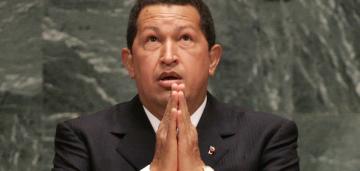Boston Protest of White Supremacy and Fascism Reveal Deep Contradictions of the Trump Era
Danny Haiphong
Boston Protest of White Supremacy and Fascism Reveal Deep Contradictions of the Trump Era
by Danny Haiphong
“The two ruling parties in the US, which have united to wage an all-out assault on the oppressed both here and worldwide.”
August 19th marked the arrival of so-called "free speech" groups to the Boston Common. They were met by 30,000 protesters who sought to run them out of the city in the aftermath of events in Charlottesville just a week earlier. The overwhelming opposition forced what many deemed to be Nazis to end their event prematurely. Activists rejoiced over the sheer numerical advantage they enjoyed over the right-wing assembly. The protest has been hailed as a victory for the "left" in the US. As with any perceived victory under the terminal decline of the US empire, the question of how revolutionaries can move the struggle against white supremacy toward the transformation of society remains unanswered.
First, white supremacy cannot be confined to the ideas that exist in the minds individual white Americans or even organized formations of white Americans. White supremacy is a system of power rooted in the social relations of US capitalism. The invention of the white race has historically justified the dispossession and oppression necessary to maximize profits in the midst of labor solidarity. Whiteness not only divided workers based on race, but ascribed a more intense form of exploitation to whoever was deemed by the ruling class to fall out of the markers of white identity. White supremacy first justified the colonial conquest of indigenous lands and the enslavement of Africans. The system of white rule was then implemented beyond the borders of the US nation-state to encompass all nations and peoples who stood in the way of capitalism's unmitigated expansion.
“White supremacy is a system of power rooted in the social relations of US capitalism.”
Marxist thinkers and organizers use the scientific method of dialectical materialism to understand the development of society. The dialectical method studies contradictions as the defining force of all phenomena and concludes that the struggle between contradictions leads to change. Contradictions are always in motion and change constantly as they interact with each other. Quantitative changes in the interrelations of things eventually lead to qualitative change. Marxists use this scientific outlook to study the development of class society from the earliest periods of humanity to the present day.
And in the present day, the principle contradiction of US society is the struggle between white supremacy and the class exploitation it produces both at home and abroad. White supremacy is often promoted by the power structure as nothing more than bad ideas which are unrelated to the structure of US society. This can be seen by the number of people at the Boston protest who were in attendance primarily to condemn “hate” speech and “Nazis.” Separating “hate speech” and “Nazis” from their historical roots masks the fact that white supremacy and corporate power have always interlocked in the US to produce ripe conditions for the rise of actual fascism. US intelligence nurtured fascism during the Roosevelt period and after, hiring many former SS war criminals to help wage a "cold" war against the Soviet Union. Under the Democratic Party presidency of Barack Obama, the US backed similar forces in Ukraine to intensify the new cold war against Russia. NATO, a thoroughly bi-partisan institution of war, recently released a documentary that celebrates the historic struggle of fascist forces in the Baltic States against the Soviet Union.
“The system of white rule was then implemented beyond the borders of the US nation-state to encompass all nations and peoples who stood in the way of capitalism's unmitigated expansion.”
The conversation and activity targeting white supremacy and fascism in the US must move beyond the present outlook of the ruling class. This outlook places Donald Trump at the center of the struggle to legitimize the US imperial system. Trump's ascendancy is more reflective of the crisis of white supremacy and imperialism than it is of the gathering strength of fascism. For Trump would not be President at this moment were it not for the deep contradictions that plague every facet of the US social structure. The intensity of opposition to Trump's racist policy propositions has been met with an equally intense opposition to his campaign promises to ease relations with Russia and institute a variant of "economic nationalism." The dialectical method thus reveals a contradiction in the struggle against white supremacy, fascism, and Donald Trump.
All contradictions possess two sides. The struggle against white supremacy and Donald Trump is no different. On one side sits the ruling class political parties, both of which oppose Donald Trump based on his positions on foreign policy and economy. On the other side of the contradiction is the left. The left has targeted Donald Trump for his racist and sexist commentary and policy throughout his campaign and presidency. Much of the left's opposition to Trump has ignored the system of imperialism. Ruling class opposition to Trump has thus created a hostile political environment for organizing on a class basis.
“Trump's ascendancy is more reflective of the crisis of white supremacy and imperialism than it is of the gathering strength of fascism.”
This has significantly limited the debate and terms of struggle. Opposition to Trump is united is in its inability to project a coherent class analysis of the period. Unity between contradictions renders the conflict between them invisible. In this time of stagnation and crisis in US imperialism, ideological unity between the left and the ruling class has blurred the contradiction between the people and the system. To fight white supremacist ideas and not the total structure of the white supremacist system of imperialism places the left in dangerous territory. Such activity obscures the actual levers of power that make the material conditions for racist ideas possible.
The fact remains that US popular anger over racist ideas is nowhere to be found when Washington decides to bomb, occupy, or destabilize another country. Demonstrations against the war on Syria have been small over the course of six-plus years, and there have been few, if any, popular protests of the US war drive against Russia, China or the DPRK despite their potentially nuclear implications. Few protested the NATO bombing of Libya that murdered over 50,000 Africans and struck a huge blow in the struggle against US military occupation of the continent through AFRICOM. The same can be said when the police in the US lynch Black Americans at a daily rate and imprison them in world record numbers. Of course, individuals and even movements are not solely to blame for this phenomenon. Much of the blame rests on the shoulders of the two ruling parties in the US, which have united to wage an all-out assault on the oppressed both here and worldwide.
“To fight white supremacist ideas and not the total structure of the white supremacist system of imperialism places the left in dangerous territory.
Disagreement within the ruling class exists over just how white supremacy should be presented to the masses. Russophobia is not considered white supremacy, nor is the constant, Orientalist coverage in the media of the DPRK being a "rogue state" ruled over by a singular "dictator." The ruling class also has no problem portraying Black Americans as a criminal element in the US whenever the police need to be defended from persecution. White supremacy must be framed as a malady of the past, one that doesn't stain the fabric of present day US imperialism. Trump and his Administration makes the suppression of US imperialism's white supremacist reality increasingly difficult and therefore possess little use to the ruling class.
And it isn't just Trump's overt white supremacy that makes his rule impractical to a large section of the ruling class. White nationalists in the streets are problematic, but even more problematic is Trump's willingness to debate the rulers on key policy issues. When questioned about his support for Confederate monuments, Trump lashed back by raising the racist implications of memorializing George Washington or Thomas Jefferson. This is but one aspect of Washington's power struggle over Trump's Presidency. Since his inauguration, Trump and his Administration have clashed with the corporate media and with the CIA over the questions of Syria and Russia.
The contradictions of the current epoch must be understood to chart a clearer path forward to social revolution and transformation. White supremacy is not just a feeling of hate that incites white Americans into violence. It is a system of social relations that supports the profit-driven interests of the US imperialist system. So what side are we on? Who is marching among us, and would they march with us should we turn our attention to the actual levers of power that make white supremacy possible? These are the questions that must be asked as the contradictions of the Trump era become more acute by the day.
Danny Haiphong is a Vietnamese-American activist and political analyst in the Boston area. He canbereachedatwakeupriseup1990@gmail.com



















